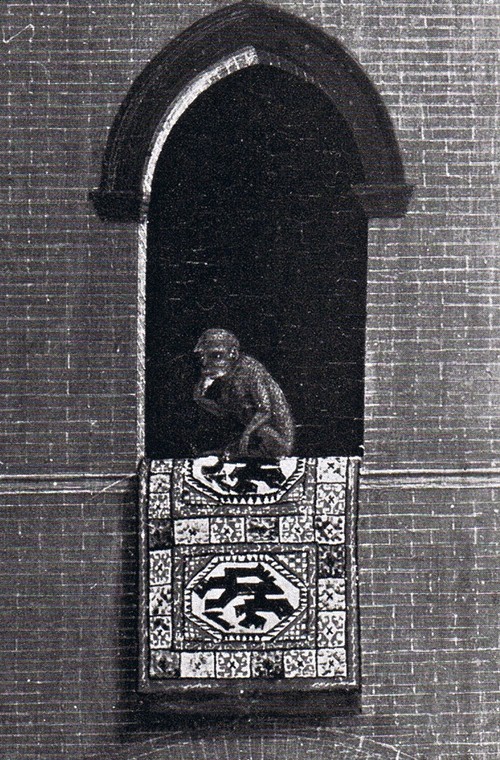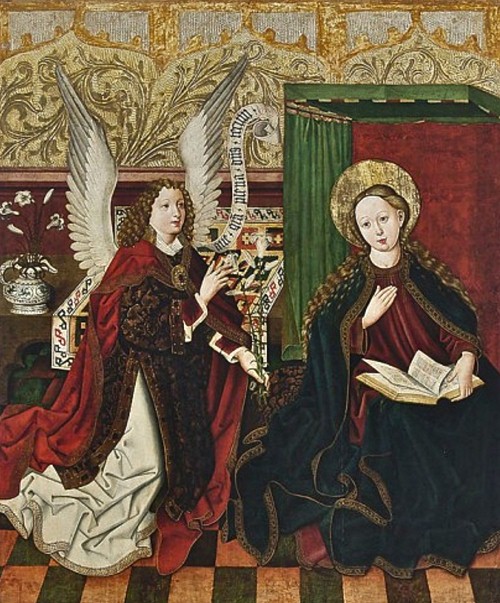Hi Filiberto,
250 years of popularity seems quite a long time. But who knows.
One point in favor of your preferred theory is that two colleagues of the cross-eyed alien, the phenix and the dragon, were still in fashion too after the middle of the fifteenth century: In addition to Mantegna, 1448 (FIG 8. Salon «animal rugs»), Di Bartolo, ca. 1441, (see earlier in this thread), also Delli Erri (1460-1470) , Obilman (1466), J. Bellini (1444) and others, kept illustrating the domestic row (*) between the dragon and the phenix.
FIG A. 1460-1470. B. degli Erri. Scene of the life of St Vincent Ferrer. Detail. K. M. Vienna.

FIG B. 1466. N. Obilman. Annunciation. Wroclaw.

The place of origin of these bizarre rugs remains a mystery, however the various examples, shown by Johann in this thread, of spanish silks with rather similar animals, including a couple of beast with bifid tail could hint at a Mudéjar origin perhaps?

(*)
In chinese tradition the dragon often represented the Emperor and the phenix the Empress.